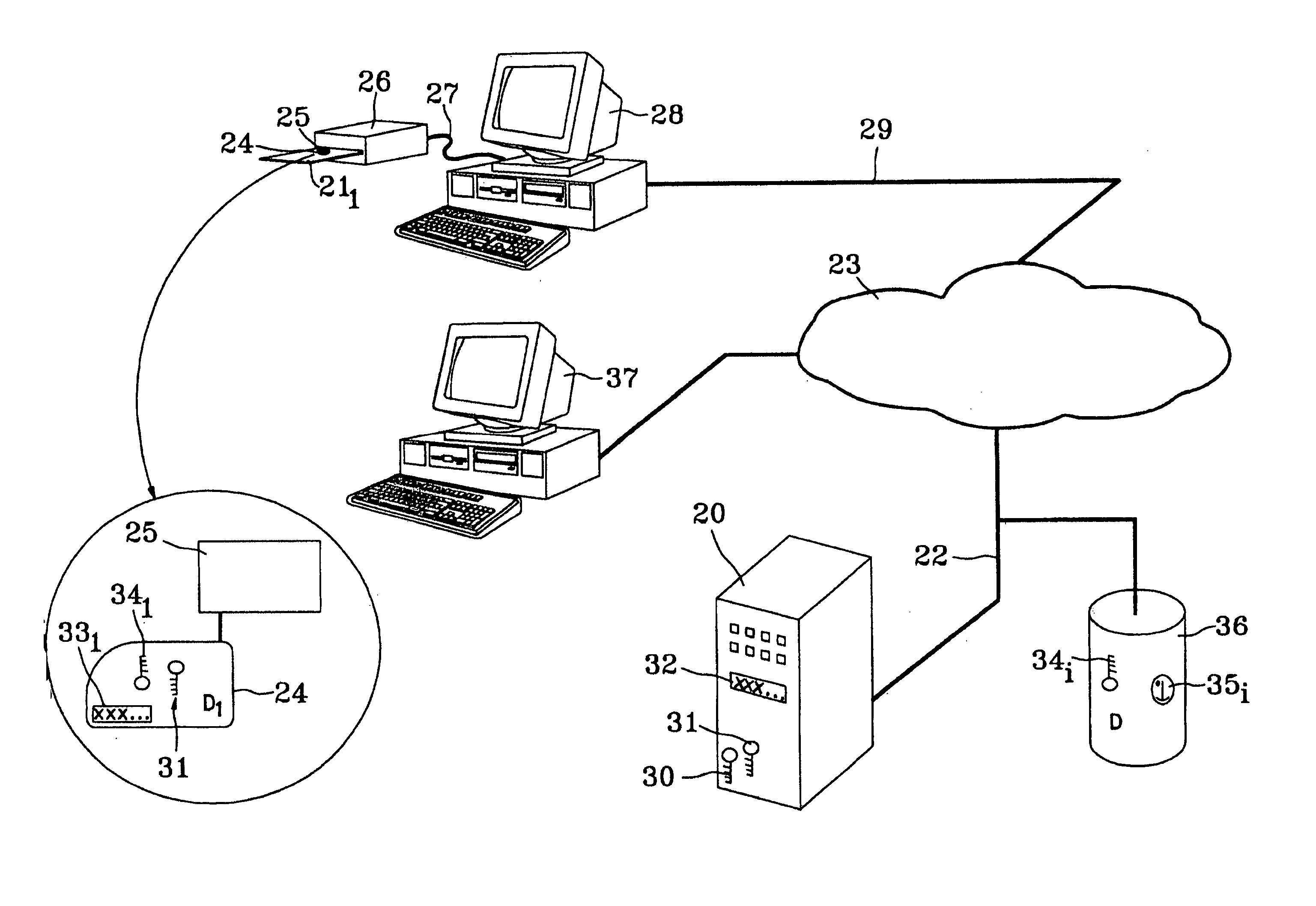Method and device for anonymous signature with a shared private key
a private key and anonymous technology, applied in the field of telecommunications, can solve the problems of increasing the length and calculation time of the group anonymous signature, not being able to reveal the identifier, and generating a group anonymous signature whose length and calculation time increase in proportion,
- Summary
- Abstract
- Description
- Claims
- Application Information
AI Technical Summary
Benefits of technology
Problems solved by technology
Method used
Image
Examples
Embodiment Construction
[0051]FIG. 1 is a flowchart of a cryptographic method of the invention for signing a message anonymously. The method is intended to be used by any member of a group comprising n members. Each member has calculation means associated with storage means. The steps of the method comprise initial steps and other steps. The initial steps are executed during the creation of the group and are described below.
[0052] A first step consists of first calculation means of a trusted authority calculating a pair of asymmetrical keys common to the members of the group (operation 1); this pair of keys comprises a common public key and a common private key. The algorithm used for the first step is a public key signature algorithm and may be an RSA algorithm, named for its authors R. L. Rivet, A. Shamir and L. Adleman.
[0053] A second step consists in the first calculation means calculating a group public key associated with the group (operation 2). The calculation is effected using a particular algor...
PUM
 Login to View More
Login to View More Abstract
Description
Claims
Application Information
 Login to View More
Login to View More - R&D
- Intellectual Property
- Life Sciences
- Materials
- Tech Scout
- Unparalleled Data Quality
- Higher Quality Content
- 60% Fewer Hallucinations
Browse by: Latest US Patents, China's latest patents, Technical Efficacy Thesaurus, Application Domain, Technology Topic, Popular Technical Reports.
© 2025 PatSnap. All rights reserved.Legal|Privacy policy|Modern Slavery Act Transparency Statement|Sitemap|About US| Contact US: help@patsnap.com



